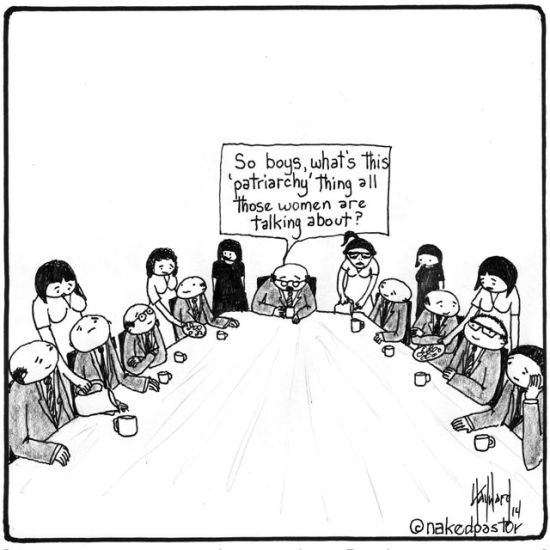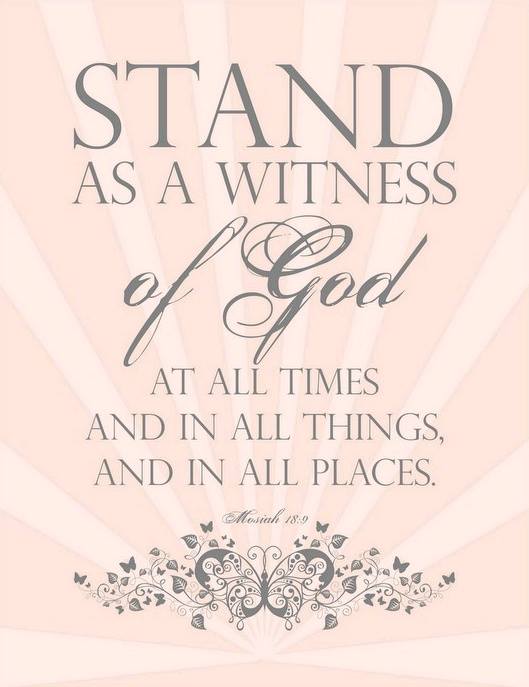The Baptism.
My husband left the church 7 years after we were married. We had two young kids and one on the way. We stayed married through his apostasy despite advice from many church members to do otherwise. I was there for him as his entire family disowned him for no longer believing. I held him when his Mother called as told him he was dead to her. I turned a deaf ear as he struggled through his anger phase. I cried myself to sleep the first time he tried alcohol. I had faith even when members of my own ward shunned our family and would no longer let their children play with my daughter because of her Daddy’s loss of faith. I held on to the goodness of Mormonism as people in the halls pitied me and my situation as though it were a fate worse than death. I prayed and continued to devote my entire heart to my callings and my ward. We fed the missionaries almost weekly and gently reminded them each visit to not try to reconvert the returned missionary. I did scripture study every morning with my kids as part of their homeschool day. I played the piano as they sat around me singing primary songs. We memorized the Articles of Faith and every Sunday I dressed them all up and sat with 3-4 kids through Sacrament, sitting alone and feeling alone and as hard as it was? I was confident in my abilities to lead my kids by example, by faith.
When my young daughter turned 8, I fasted every Sunday for a year in preparation. I pleaded and bribed my husband in preparation for this day. I knew it would be hurtful to him both to be left out of such a momentous moment in their lives and to have his children join a faith tradition he no longer valued and even considered hurtful. But it was my faith, it was my faith community, and it was something I knew was right. I asked my big brother to baptize her, and my father to confirm her. Since they both live out of state, we scheduled and planned for months to make this day go seamlessly. My Mother hand-smocked a beautiful baptism dress for her. I designed the perfect program and deserts for her, and as much as I wanted to be involved I knew that this day wasn’t about me, it was about her and the commitment she was about to make. I was just happy to be there with her through it.
After the program I walked her into the dressing room, I pinned her hair one last time and gave her a teary hug. I encouraged her as she dipped her toe in the water and lovingly pointed her to my Christlike big brother waiting for her at the bottom of the stairs… and then my heart dropped. I realized that the had stepped forward in the font, and from my view at the tops of the steps in the dressing room I could not see and could barely hear what was happening in the font. I panicked and ran outside the dressing room, through the bathroom, around the hall and into the cultural hall where the font was viewable from the front…… I ran into the room to see my daughter underwater, she came up, searching the crowd for me. I smiled at her and ran back around to dry her and get her ready for her confirmation. I was too shocked to cry.
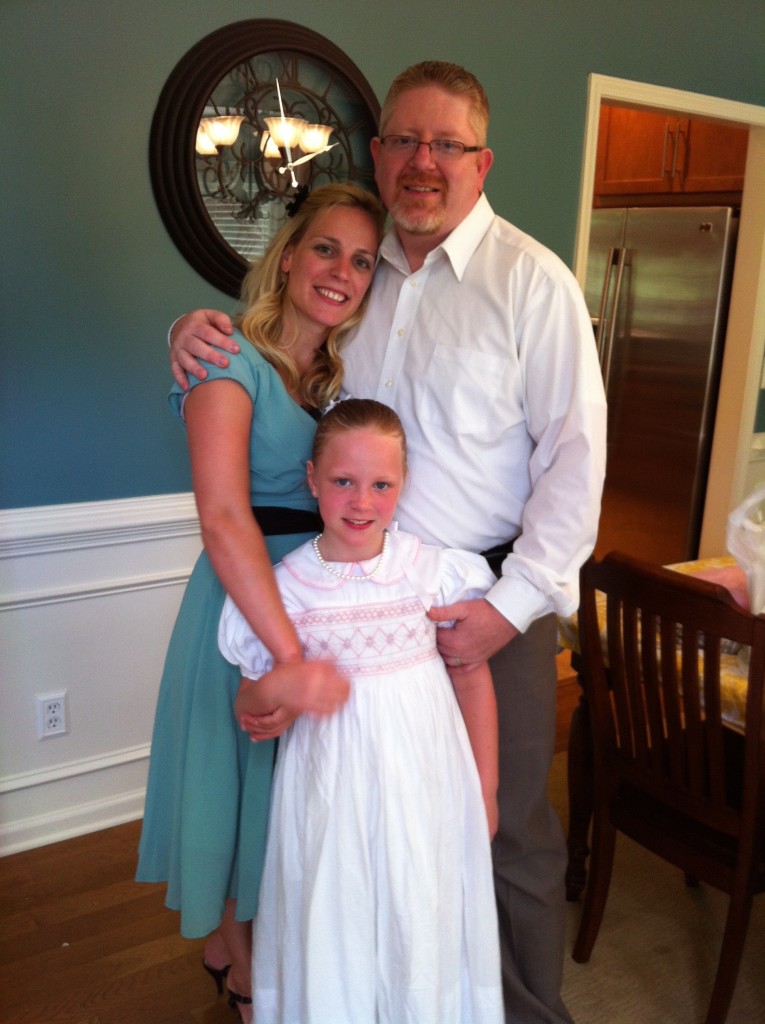
When the time came to welcome my daughter into her own religious community, the faith of her mother’s, I wasn’t only not needed, but my absence wasn’t even noticed. Yes, everyone double checked the bishop had made it into the room, and the witness had a spot to view but her mother? Her mother wasn’t relevant. The mother that fasted for this day, prayed for this moment and taught her children to choose the right.
It wasn’t until that moment that I realized that my own faith didn’t even have confidence in my abilities to lead my children. My leaders may not have faith in me but, I am ready. I am ready to Stand as a Witness.
Ready to Witness.
Joanna Wallace, the author of this post, is on Ordain Women’s Executive Board as Social Media Chair.
Because It’s 2016
As we come to the close of Black History Month, it’s important to remember that diversity and inclusiveness are not just ideals to be celebrated; they are essential to our well-being as a community, both religious and secular. I believe Canadian Prime Minister Justin Trudeau understood this when, soon after he was elected last year, he unveiled his new cabinet. Could it have been even more inclusive? To be sure. However, for the first time in history, the cabinet not only reflected Canada’s diverse population, but half of the ministers were women. When asked by a reporter why such parity was so important to the young, Liberal Party leader, Trudeau quipped, “Because it’s 2015.”
I often respond similarly when asked why I believe women should be ordained. Like Trudeau, I’ve learned that it is simply self-defeating to marginalize or leave untapped the countless gifts, talents, abilities and aspirations of all members of our community, including women.
Fortunately for Mormons, the ability to make such positive changes is inherent in our doctrine. We believe God “will yet reveal many great and important things…” In a Church whose theology is so hospitable to change, why are we often hostile to it? We at Ordain Women, as this year’s theme suggests, are ready for revelation. Are you?
We’re well into 2016. Couldn’t our religious community more fully reflect the radical inclusiveness of the gospel of Jesus Christ? Isn’t it about time we lay aside the rigid gender roles and tortured logic that keep us from seeing each other as we are–spiritual siblings, colleagues and friends all inching together toward that hope?
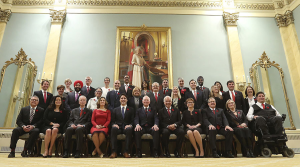
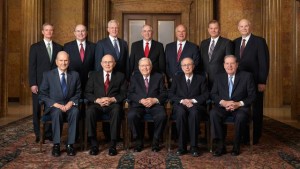
The Ugly Truth About Patriarchy
Born of violence and raised on the myth of male superiority, patriarchy dominates our world. Our myths tell us it is divine, but the truth is much less appealing. Patriarchy is defined as:
- a system of society or government in which men hold the power and women are largely excluded from it.
Like all monotheistic religions, Mormonism is based on patriarchy. With its all-male priesthood, men hold all significant power in the church. To the extent women make decisions in the church, they are minor, and almost always local decisions made under the supervision of men.
So, what is the origin of patriarchy?
Patriarchy is a product of sexism, and like all the “isms,” sexism was born from violence. Like racism toward Africans was born from an asymmetry between the ability of Europeans and Africans with regard to technologies for inflicting violence, sexism was born from the greater upper body strength of men (on average), which enabled them to control women through the use of violence.
With the development of agriculture, physical strength generated an economic premium, since muscle (human and animal) was the primary source of energy. Surpluses created through agriculture facilitated the development of hierarchies, which could further enforce patriarchy through violence and the development of elaborate mythologies designed to keep people in their proper place. For women, this meant a subservient place.
One of the most critical institutions to develop in these hierarchies were military institutions. With their reliance on close, physical combat, once again physical strength was particularly prized. As hierarchies began to make their way in the world through military conquest, the mythologies glorifying the masculine became much stronger. We see this in the male gods of monotheism.
Monarchs, controlling such governments from their royal thrones, also promoted a mythology that imagined a royal monarch god controlling the heavens from atop his throne in the sky. Mirroring earthly monarchs, this heavenly monarch was imagined to have all of the masculine traits that were critical to military conquest.
Likewise, military conquest depended on the hierarchy’s ability to convince human beings to willingly sacrifice their lives in exchange for some better tomorrow. Thus, the mythologies designed to support these militaristic hierarchies were focused on death, rather than life. As a result, countless generations were duped into sacrificing their lives for the benefit of the few elites at the top of these patriarchies.
Patriarchy was a fact of life in America in the 19th century when the gospel was restored. Women in America were still considered property. They were not allowed to vote. And unfortunately, the traditions of patriarchy took hold within our own religious tradition.
Just as the issue of racism was addressed in 1978, it is time to address our tradition of sexism, which we inherited from 19th Century patriarchy. We, therefore, call on the leaders of our church to end sexism in our religion. First and foremost among the changes required will be the ordination of women to the priesthood.
The Witness of a Sister
Earlier this month, Ordain Women announced its latest campaign in the struggle for gender equality within the LDS Church – the Ready to Witness campaign. In doing so, my sisters are saying to our beloved Church leaders, “We are ready to take our rightful places as witnesses of the Savior.” And I can’t think of a more fitting time to embark upon this campaign than the month of February – Black History Month. Because as we move forward in faith in this endeavor, we can draw so much strength and courage from African-Americans who have been powerful witnesses for equality, such as Sister Pollard.
As is all too common with great women of our past, not much is known of this woman. We don’t know the date of her birth, the details of her upbringing, occupation, marital status, or even her full name. She is simply known as Sister (or Mother) Pollard. About all that we do know is that she was a beloved community elder in Montgomery, Alabama at the time of the historic bus boycott, and that she made a lasting impact on America through her witness.
Dr. King told her story in a sermon at Chicago’s New Covenant Baptist Church in April 1967:
When we were in the midst of the bus boycott, we had a marvelous old lady that we affectionately called Sister Pollard… And one week I can remember that I had gone through a very difficult week. Threatening calls had come in all day and all night the night before, and I was beginning to falter and to get weak within and to lose my courage. And I never will forget that I went to the mass meeting that Monday night very discouraged and a little afraid, and wondering whether we were going to win the struggle. And I got up to make my talk that night, but it didn’t come out with strength and power. Sister Pollard came up to me after the meeting and said, “Son, what’s wrong with you?” Said, “You didn’t talk strong enough tonight.”
And I said, “Nothing is wrong, Sister Pollard, I’m all right.”
She said, “You can’t fool me.” Said, “Something wrong with you.” And then she went on to say these words, “Is the white folks doing something to you that you don’t like?”
I said, “Everything is going to be all right, Sister Pollard.”
And then she finally said, “Now come close to me and let me tell you something one more time, and I want you to hear it this time.” She said, “Now I done told you we is with you.” She said, “Now, even if we ain’t with you, the Lord is with you.” And she concluded by saying, “The Lord’s going to take care of you.”
And I’ve seen many things since that day. I’ve gone through many experiences since that night in Montgomery, Alabama. Since that time Sister Pollard has died. Since that time I’ve been in more than eighteen jail cells. Since that time I’ve come perilously close to death at the hands of a demented Negro woman. Since that time I’ve seen my home bombed three times. Since that time I’ve had to live every day under the threat of death. Since that time I’ve had many frustrating and bewildering nights. But over and over again I can still hear Sister Pollard’s words: “God’s going to take care of you.” So today I can face any man and any woman with my feet solidly placed on the ground and my head in the air because I know that when you are right, God will fight your battle.
As someone who currently lives in the reality of Dr. King’s famous dream, I am so grateful that he had a Sister Pollard to witness to him. And I truly believe that our daughters and granddaughters will one day be grateful for the Sister Pollards within this movement who continue to witness to our Church leaders about the need for gender equality within our community of believers. And OW’s Ready to Witness campaign affords us on opportunity to be just like Sister Pollard; provided we learn the lessons her story has to teach us.
First, you will notice that Sister Pollard didn’t wait for an invitation to provide helpful correction to her beloved church leader. And we should be clear that she acted out of a profound love for Dr. King. She simply loved him and the community too much to allow them to be less than God meant for them to be. So she spoke up, just as we will speak up when we send in our postcards and letters proclaiming that we are ready to witness. And like Sister Pollard, we do so because we love our leaders and fellow Mormons too much to keep half of our community from partaking of all of the fruits of the Gospel.
Second, Sister Pollard was not easily dissuaded from giving her witness. Dr. King’s original response could be summed up as “I’ve got this, woman!” In much the same way, Church leaders have responded to our previous demands for the priesthood with a similar refrain, “This is the Lord’s church and it is being conducted just as it should be by those whom Heavenly Father has called to lead.” In other words, they have said, “We’ve got this, women!”
Yet, Sister Pollard pushed beyond Dr. King’s initial dismissals and literally got in his face (“Now come close to me and let me tell you something one more time …”). We are demonstrating similar persistence through this campaign. Despite prior rebuffs (and even reprisals from local leaders), we are going to tell our leaders “something one more time” — women are ready to witness and be ordained to the priesthood.
Third, Sister Pollard was not intimidated by her lack of position or learning. While we know little about Sister Pollard, it’s probably safe to conclude from her plainspoken language that she was not a biblical scholar. Yet, she had no problem with challenging the Reverend Dr. Martin Luther King, Jr., a recent Ph.D. from a prestigious northern university, resting solely upon her authority as a witness of God’s power and mercy.
And this witness is what sustained Dr. King through the challenges ahead. Even amidst the turmoil of jailings, stabbings, bombings and death threats, he was able to rely on the Sister Pollard’s witness from the Holy Spirit – “The Lord’s going to take care of you.”
Likewise, none of us should be intimidated by our lack of status within the Church hierarchy or the fact that we don’t have a college degree or a Master’s in Religious Studies. For those of us who have received a witness from the Holy Spirit that God wants all children of heavenly parents to toil together side-by-side in the building of Zion, we have every right to proclaim that witness, regardless of our eloquence, “faithfulness” or current status within the Church. In fact, we are duty-bound to do so by our baptismal covenant, in which we agreed to “stand as witnesses of God at all times and in all things.”
And finally, we can be like Sister Pollard by keeping another of our baptismal covenants – “to mourn with those that mourn and comfort those that stand in need of comfort.” Dr. King must have taken great comfort from not only the promise of divine assistance, but the temporal assurance of “We is with you.” After all, in the end, it wasn’t just the goodness of God, but also the unity of the local black church community that ultimately led to greater equality for all citizens of Montgomery, Alabama.
Likewise, we will only see gender equality in this Church if we maintain an equal measure of unity within our OW community. We must continue to mourn with those who suffer church discipline as a price for their witness. We must continue to comfort those who are criticized and ostracized by friends and even family for this cause of righteousness. We must continue to demonstrate that Christ-like love that is at the heart of our witness and is the reason for our hope of building Zion.
And guided by the example of Sister Pollard, we will do just that as we continue to bear witness that “Ye are all one in Christ Jesus” and that women should be ordained to the priesthood as full participants in the Church of Jesus Christ of Latter-day Saints.
Ready to Witness – Your Stories
To learn more about the Ready to Witness campaign, and how you can share YOUR story, please click HERE.
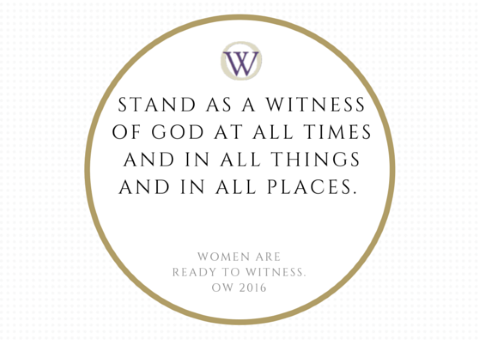
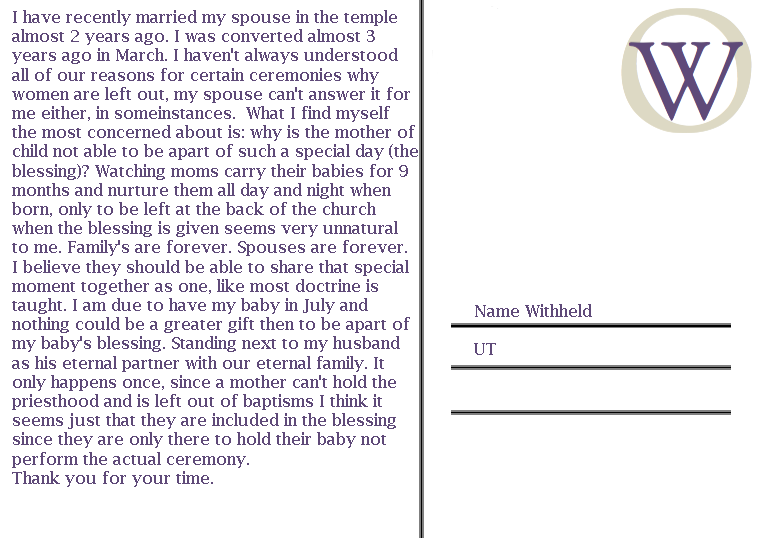
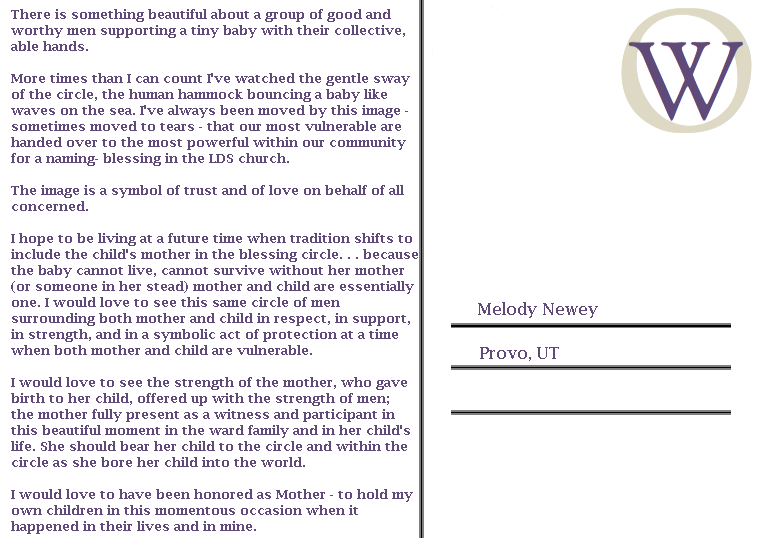
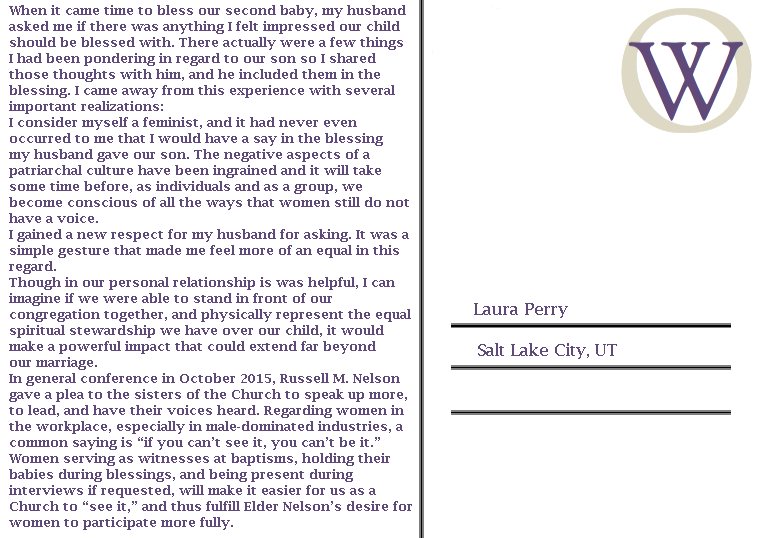
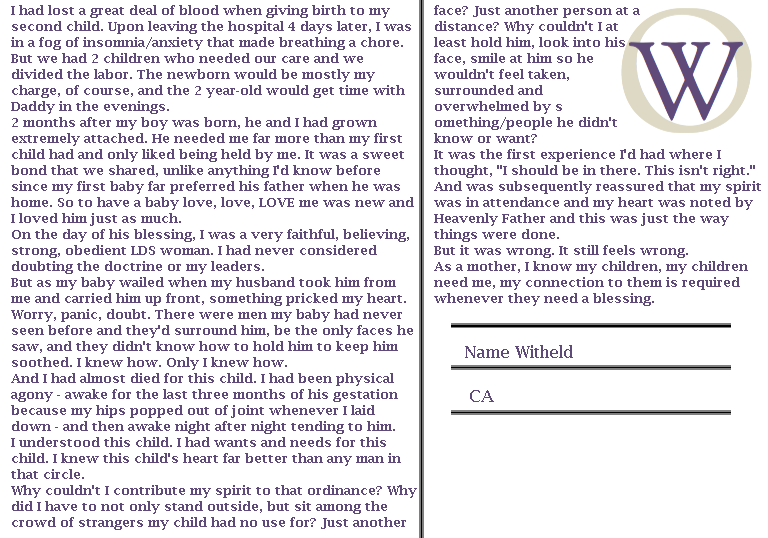
Ready to Witness in the Blessing Circle
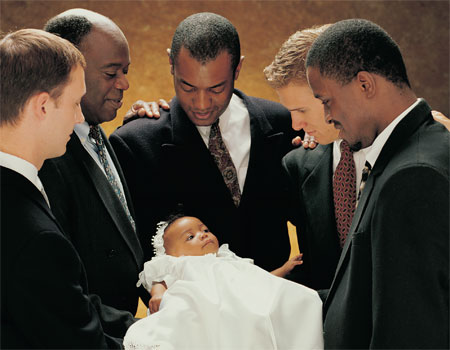
We are standing and proclaiming that we are “Ready to Witness” as we did at the cross and the tomb. One area in the LDS Church where we are barred from witnessing is in baby blessings. Although my children were born long before I joined the LDS Church, I have mourned with my sisters as they have not been able to act as witnesses to these special moments in their children’s lives. This piece almost wrote itself as I watched the anguish of one of our sisters as she was excluded from the blessing circle.
I watched her as she proudly carried her baby son into the sanctuary, oblivious to the stares of those who may have been critical of her attire, her hairstyle, or of the fact that the father of her child was nowhere to be seen. She was excited to be a part of the LDS Church, having been baptized in the middle of her pregnancy, and was eager to share her newly minted testimony with her baby son.
I watched her as she stood holding her baby son, with a look of expectancy, clearly waiting to have the circle form around her and her son. Instead, the circle was formed without her, and her baby son was taken from her arms by one of the men from the circle while another one of the men stepped away from the circle long enough to escort her to a seat.
I watched the look on her face change from absolute joy to confusion to anguish. I watched her expressive face as her emotions and feelings battled for supremacy. I could see that one part of her wanted to insist on being included in the circle while another part of her wanted to be happy that her baby son was being blessed, even if she was excluded from the circle. I watched as the latter part seemed to win the battle.
I sat and listened to the baby blessing, and I thought about how this beautiful baby boy was in a circle that included no one who was related to him. I thought about how, if his biological male parent (even though he was acting more like a sperm donor than a father) walked into the sanctuary at that moment and announced who he was, he would have been able to join in the circle. I thought about how his biological female parent who had carried him for nine months and who had given birth to him was denied that privilege.
I thought about the disconnect between celebrating families while at the same time denying her and her baby son the ability to participate in his blessing as a family. I could come up with no reason that made sense to me for denying either of them that privilege and I wept for her, for her baby son, and for all of my sisters who had been denied the opportunity to participate in their children’s blessings.
I left the sanctuary that day with the look of anguish that was on her face etched in my memory. I serve a God of love, and I do not believe that blessing a child without including the mother is an act of love or that it is divinely inspired. Instead, the memory of her face serves to strengthen my conviction that the fight for the ordination of LDS women and for the inclusion of women in all aspects of our faith is divinely inspired
An original version of this post was published on September 21, 2015, on FEMWOC.
Read more about the Ready to Witness campaign and how you can participate HERE.
Celebrating Black History Month — A Study in Contrasts
February of each year is Black History Month in the United States.
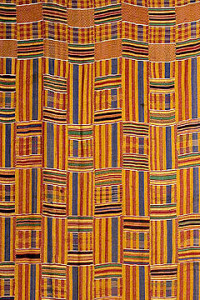
Kente Cloth
This year, the first day of February happened to be on a Sunday. I accompanied a friend of mine to early morning church services at the church that he attends. The ushers (male and female) were dressed in matching black suits with sashes made of Kente cloth. The walls and the furnishings were decorated with Kente cloth. The choir members were arrayed in beautiful purple choir robes with sashes made of Kente cloth. The choir and the congregation sang soul-stirring spirituals from the African American Heritage Hymnal and our rendition of the Black American National Anthem – “Lift Every Voice and Sing” – brought us all to our feet and ended with us raising our fists, triumphantly and defiantly, in the symbol of Black power. The deacons and deaconesses who served the Communion (read: Sacrament) were also dressed in matching black suits with sashes made of Kente cloth. There was an oratorical performance by a group of young people dressed in black and white with sashes made of Kente cloth. The pastor, who was also arrayed in a purple robe with a sash made of Kente cloth, preached his sermon about a former slave who wrote a letter to his slaveholders pointing out the hypocrisy of professing to be followers of Christ while supporting, practicing, and benefiting from slavery. The entire service was a beautiful, soul-stirring celebration of Black History Month.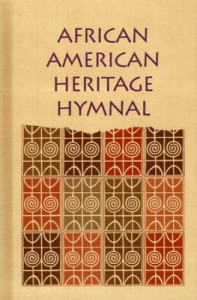
I then left that church and drove about ten miles to the church I attend. There was no Kente cloth anywhere to be seen. There was no choir. There were no purple robes. There were no soul-stirring spirituals. We did not sing “Lift Every Voice and Sing.” There was no oratorical performance. There was no mention, NONE WHATSOEVER, about Black History Month.
It was the very same day. So what was the difference? My friend attends Zion Hill Baptist Church, a Black Baptist Church. I attend the Atlanta Ward of The Church of Jesus Christ of Latter-day Saints.
Black History Month[1] is celebrated by our local, state, and federal governments. It is celebrated by educational institutions, both public and private. It is celebrated by small businesses and huge corporations. It is celebrated by individuals across the political spectrum and of individuals of all races, colors, religions, creeds, and gender/sexual identity. It is celebrated by churches, other religious organizations, and nonprofit organizations. These celebrations are typically widely promoted and participation therein is strongly encouraged.
However, while there have been instances where individual wards, stakes, or even Temple districts celebrated Black History Month,[2] the Church of Jesus Christ of Latter-day Saints does not hold, promote, or encourage a church-wide or even nationwide celebration.
I joined the LDS Church as a convert from the Black Baptist faith on January 13, 2008. So, I have now been a member of the LDS Church for eight years. At no time in those eight years have I heard of or experienced a church-wide celebration of Black History Month. Even more frustrating, at no time during those eight years have I seen or experienced a celebration at my ward of Black History Month.[3]
(To be fair, there are meetings and classes that I do not attend. Furthermore, since I am not married and my daughters (who are not members) are grown, I do not know everything that transpires in Primary, Young Women, Young Men, Elders Quorum, or High Priests Group. However, I have seen or heard nothing which would lead me to conclude that any of these auxiliaries is or has been celebrating Black History Month).
I find the absence of a celebration of Black History Month to be extremely troubling, particularly given the racial makeup (majority African American) of my ward and the large number of converts in my ward. To me, it is just one more example of how the LDS Church, for all of its rhetoric about the importance of families, pulls us away from our family members who are not members of the LDS Church. It is just one more example of how the LDS Church fails to connect with the surrounding community and fails to recognize and address issues of importance to the surrounding community. Finally, it is just one more example of how the LDS Church, while congratulating itself on being a worldwide church, does not celebrate or even recognize the cultural and racial diversity of its members.
I recognize that I must share some of the responsibility for the lack of a Black History Month celebration at my ward. I have been in positions of leadership and I did not do enough to change the status quo. I vow to do all that I can to make sure that another Black History Month does not pass without a celebration in the Atlanta Ward. I urge you to take the same stance in your ward.
[1] *http://femwoc.com/2016/02/01/the-what-where-when-how-and-why-of-black-history-month/
[2] https://www.lds.org/church/news/lds-black-history-month-celebration-held-in-florida?lang=eng&_r=1 (Black History Month Celebration in the Miami Lakes Florida Stake in 2013); http://ldsmag.com/article-1-3371/ (Black History Month Festivities at Washington D.C. Temples Visitors’ Center in 2005); http://ldsmag.com/article-1-3514/ (African American Open House at Family History Library in 2003).
[3] Queries about the lack of a celebration have been met with statements to the effect that we do not do that in the LDS Church.
We are Ready to Witness
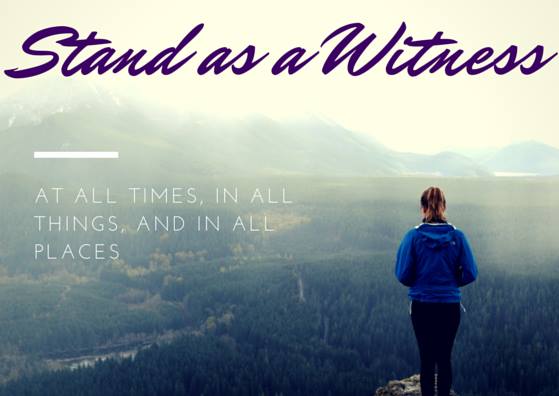
I am one of a handful of Mormons in my family, so on the day I married in the Salt Lake Temple only three of my relatives could come with me to the temple: my grandmother who was my escort and I love her forever for it, and an aunt and uncle. When I was asked who would be the witness to my wedding, I chose a woman with whom I had been close for years. She had helped me find my testimony in the gospel; I had known and trusted her for seven years. But I was gently informed that she could not witness my wedding because she was a woman. I would have to select a man.
This wasn’t the first time I had bumped up against the patriarchal structure of our church. It happens often, even when we don’t notice it. But it was a moment I will never forget because it meant so much to me. The people who really mattered to me—who knew me and had helped make me the woman I was—were women, and they were not allowed to do anything for me that day except hold my veil. It was especially surprising to me, considering the words of Mosiah that are quoted in the Young Women’s theme, declaring that “we will stand as witnesses of God at all times and in all things, and in all places.” It is a disservice and disappointment that has reappeared at baby blessings and baptisms, and these policies have broken the hearts of countless women in our church.
The policies are wrong and I am ready for that to change.
Beginning today, Ordain Women is launching a campaign called “Ready to Witness.” We are inviting women to download a postcard HERE and fill out this online form and share their story.
- Explain what it feels like to have your infant taken from your arms and blessed while you weep because you are not allowed to witness the moment, because policy says a woman cannot hold her baby.
- Share the moment you were told that you could not act as witness to your best friend’s baptism, because policy says that witnessing is a role reserved for men.
- Describe the fear you feel when you imagine young women, alone in rooms with adult men asking them personal questions, and no one to sit next to them to witness and protect them, because policies dictate worthiness interviews with male leaders.
- Tell of the moment you realized that your Young Women’s president could not serve as the witness at your temple sealing because the Church Handbook of Instruction says that only men are acceptable witnesses.
- Ask why, when women were chosen to serve as the first witnesses of the resurrected Christ, these policies are in place to keep women from serving as witnesses to these moments in our church.
Ordain Women will be tracking how many submissions our leaders receive, so once you’ve submitted your postcard, please share your story online with us HERE and on Friday, April 1, representatives and supporters of Ordain Women will walk to the Church Administration Building to deliver the stories we collect. We will stand at the Church Administration Building on Friday April 1, Saturday April 2, and Sunday April 3, during daylight hours, collecting more postcards and stories and waiting to deliver them on Monday April 4. We invite supporters to join us on these three days.
This is the moment to demonstrate with your words that
you are Ready to Witness
and to demonstrate with your body that
you are Ready for Revelation
that expands the roles of women to include witnessing,
as we did with our Savior.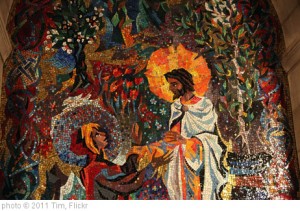
Save the Date!
Save the date for this coming Wednesday, February 17th! Ordain Women will be launching our upcoming action. Exciting news ahead! #ReadyForRevelation #ReadyToWitness
Women are Ready to Witness

Dear Brethren,
This should be an easy fix. I am sure that it must simply be an oversight. But, I want you to know the women are “Ready to Witness.” For some reason (as discussed below), despite having all the requisite abilities, woman have been banned from acting as witnesses in the church. Despite having fully functional eyes, memories and language skills, women are not allowed to witness baptisms, weddings, or other ordinances performed in the church. I am sure you would never claim that they are incapable of observing and accurately reporting their observations, so where did this strange practice begin?
We know it did not begin with Jesus Christ. After all, he chose women to be the first witnesses to his resurrection. When it comes to endorsing women as witnesses, you can’t beat the Savior’s selection of women as his witnesses. Luke 24: 1-10.
1 Now upon the first day of the week, very early in the morning, they came unto the sepulchre, bringing the spices which they had prepared, and certain others with them.
2 And they found the stone rolled away from the sepulchre.
3 And they entered in, and found not the body of the Lord Jesus.
4 And it came to pass, as they were much perplexed thereabout, behold, two men stood by them in shining garments:
5 And as they were afraid, and bowed down their faces to the earth, they said unto them, Why seek ye the living among the dead?
6 He is not here, but is risen: remember how he spake unto you when he was yet in Galilee,
7 Saying, The Son of man must be delivered into the hands of sinful men, and be crucified, and the third day rise again.
8 And they remembered his words,
9 And returned from the sepulchre, and told all these things unto the eleven, and to all the rest.
10 It was Mary Magdalene, and Joanna, and Mary the mother of James, and other women that were with them, which told these things unto the apostles.
Despite women being selected to witness the resurrection, why does the church today ban women from witnessing even the most basic of ordinances? This ban on women comes from ancient Rome. We all learned about the Great Apostasy, and how Roman politics corrupted Christianity. It was this apostasy that necessitated the restoration. This Roman corruption included the devaluation of women, and the ban on women as witnesses. Rome with all its male bravado and devotion to war devalued the feminine. As Bart Ehrman explains in his article “Male Domination in Antiquity,” women were seen as weak, frail, and incompetent?
Women were on the lower end of the scale for biological reasons: they were “men” who had been only partially formed in the womb, undeveloped, imperfect from birth. They differed from “real” men because their penises had never grown and the rest of their bodies would never develop to their full potential. Thus, by their very nature, women were necessarily the “weaker” sex.
Surely, Dear Brethren, you accept the judgment of the Savior concerning women as witnesses over the Roman corruption that later infected Christianity. After all, Rome placed women on par with slaves, denying both the right to carry their own name. After all, a name was a distinct sign of Roman citizenship. Moreover, women were excluded from all public functions and rights.
- The woman could not have charge of another person. “Tutela virile officium est”. She could not have patronage of her children and cousins (except in later Roman law).
- Women could not function as witnesses, whether at the drawing up of a last will, or in any other form of law.“The woman is incapable of being a witness in any form of jurisprudence where witnesses are required”. Women were reckoned with minors, slaves, the dumb and criminals to be incapable of being witnesses.
- Women could not start a court case without being represented by a man. Women cannot represent themselves in law “because of the infirmity of their sex and because of their ignorance about matters pertaining to public life”.
Certainly, Brethren, you recognize the fallacy of these Roman beliefs. As part of the restoration of all things, we should follow the example of Jesus Christ, and include women in all witness functions within the church. The church should no longer be ruled by the dead hand of Roman misogyny, but restore the enlightened view of women reflected in the choice of the Savior to have women be the first witnesses to his resurrection.
P.S. Because this same Roman misogyny is also the basis for denying women priesthood within Christianity, please consider reversing the priesthood ban on women.







